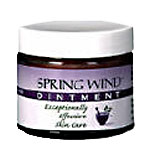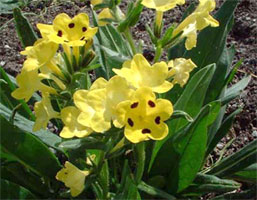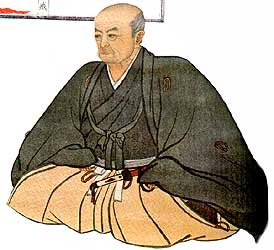
Spring Wind Skin Ointment
Skin disorders are often best treated by applying medicines directly to the skin. It has been found, for example, that some cases of eczema, psoriasis, and dermatitis respond very promptly to topical application of minerals, such as zinc. Presumably, the skin cells take up the minerals and alter their metabolism towards normal conditions, but obtain much less from the blood supply, even when dietary supplements are taken. Similarly, herbal ingredients can reduce inflammation, restore normal blood flow, promote healing, and reduce wrinkling and cracking, when applied directly to the affected skin.
A famous formulation from the Ming Dynasty is Zi Yun Gao (Purple Clouds Ointment). It was originally recorded in the book Wei Ke Zheng Zong (True Lineage of External Medicine; 1617) by Chen Shigong. The formula was later modified in Japan by Seishu Hanaoka (1760-1835; pictured below right) who developed the field of surgery in Japan and integrated traditional Chinese medicine with Western medicine (brought by Dutch settlers). The ointment was marketed in Japan and Taiwan after the second World War, and later, to many other countries. The purple root that gives the ointment its color and name is either Arnebia euchroma (flowering tops pictured below left) or Lithospermum erythrorhizon, two closely related herbs of the Borage Family that have similar roots used interchangeably (these herbs are known in Chinese as zigen, purple root). The root has antiseptic and anti-inflammatory action, and it promotes healthy blood circulation. The other standard ingredient is tang-kuei, a blood nourishing herb, and the extracts are in a base of sesame oil. A similar formulation-Yu Hong Gao (Jade Red Ointment)-was developed during the Qing Dynasty and reported by Wu Qian in his book Golden Mirror of the Medical Tradition (Yi Zong Jin Jian, 1742). It also has arnebia or lithospermum along with tang-kuei as main ingredients in a base of sesame oil.
 Arnebia euchroma |  Seishu Hanaoka |
A high quality preparation relying on this traditional approach to skin care is the ointment by Spring Wind, a U.S. company formed in 1992, with close ties to Kaiser Pharmaceuticals of Taiwan. Their formula has:
- Sesame oil as the base
- Beeswax to firm up the oil
- Rehmannia and Tang-kuei to nourish the skin
- Arnebia as the main component
- Coptis to add antiseptic and anti-inflammatory action
- Turmeric, Safflower, and Peachpit to promote blood circulation
- Tang-kuei to nourish the skin
- Licorice as an anti-inflammatory
- Natural Almond Fragrance
